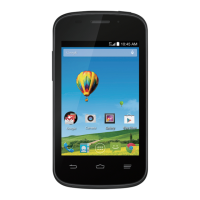124
following measures:
• Reorient or relocate the receiving antenna.
• Increase the separation between the equipment and receiver.
• Connect the equipment into an outlet on a circuit different from that to which the
receiver is connected.
• Consult the dealer or an experienced radio/TV technician for help.
Hearing Aid Compatibility (HAC) regulations for Mobile
phones
In 2003, the FCC adopted rules to make digital wireless telephones compatible
with hearing aids and cochlear implants. Although analog wireless phones do not
usually cause interference with hearing aids or cochlear implants, digital wireless
phones sometimes do because of electromagnetic energy emitted by the phone's
antenna, backlight, or other components. Your phone is compliant with FCC HAC
regulations (ANSI C63.19- 2007). While some wireless phones are used near some
hearing devices (hearing aids and cochlear implants), users may detect a buzzing,
humming, or whining noise. Some hearing devices are more immune than others
to this interference noise and phones also vary in the amount of interference they
generate. The wireless telephone industry has developed a rating system for wireless
phones to assist hearing device users in nding phones that may be compatible with
their hearing devices. Not all phones have been rated. Phones that are rated have
the rating on their box or a label located on the box. The ratings are not guarantees.
Results will vary depending on the user's hearing device and hearing loss. If your
hearing device happens to be vulnerable to interference, you may not be able to use
a rated phone successfully. Trying out the phone with your hearing device is the best
way to evaluate it for your personal needs.

